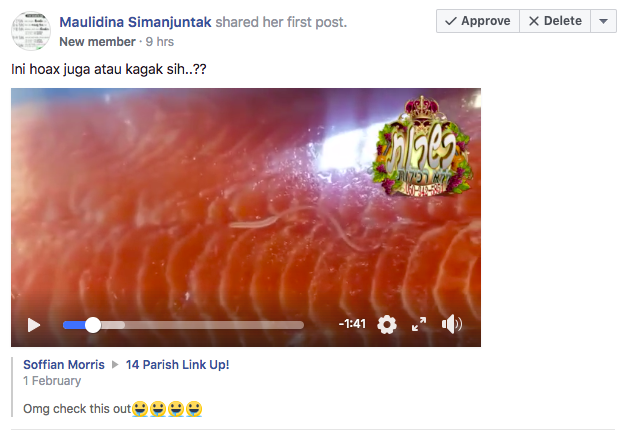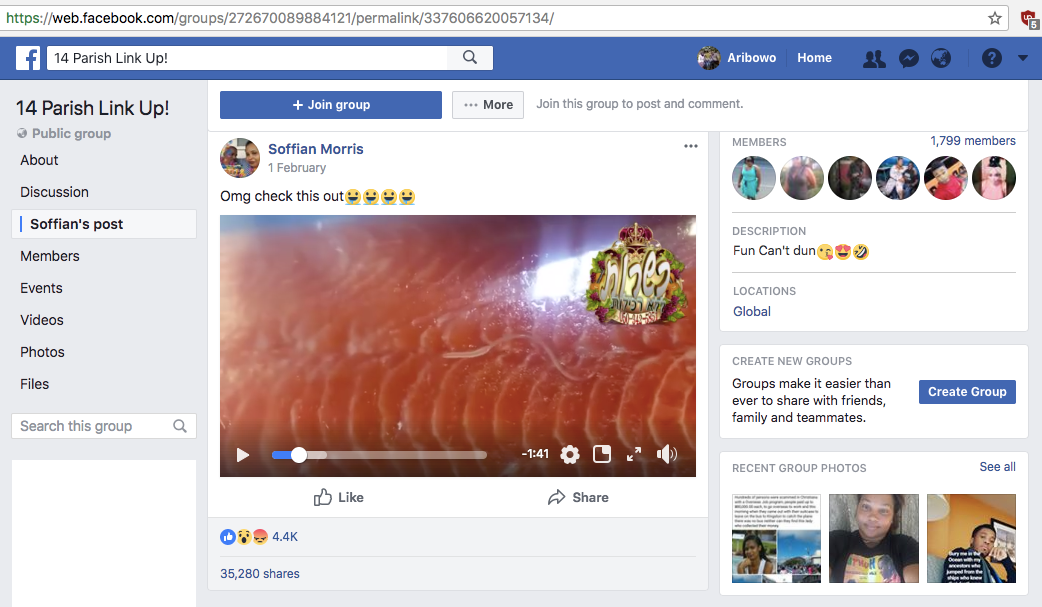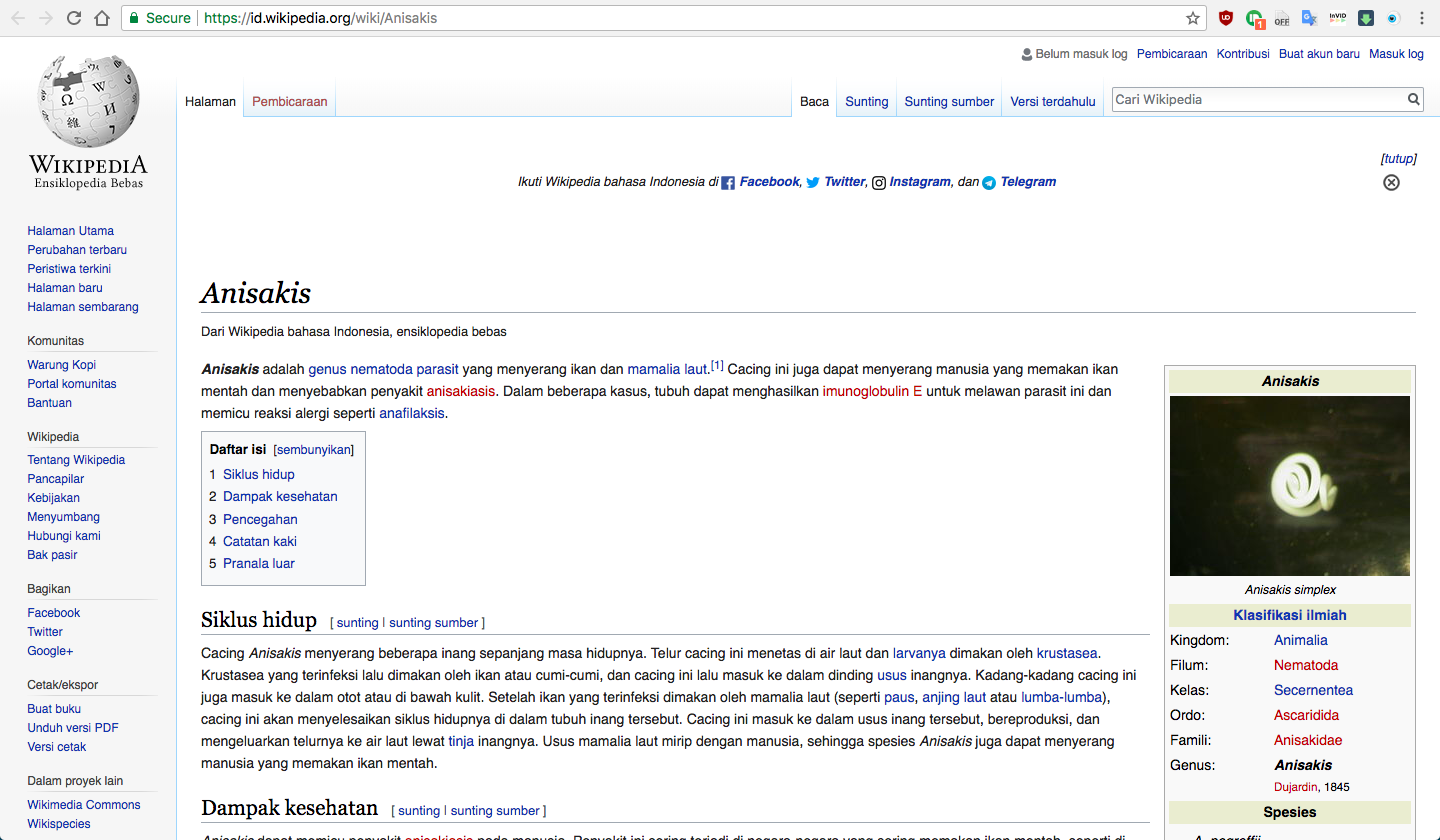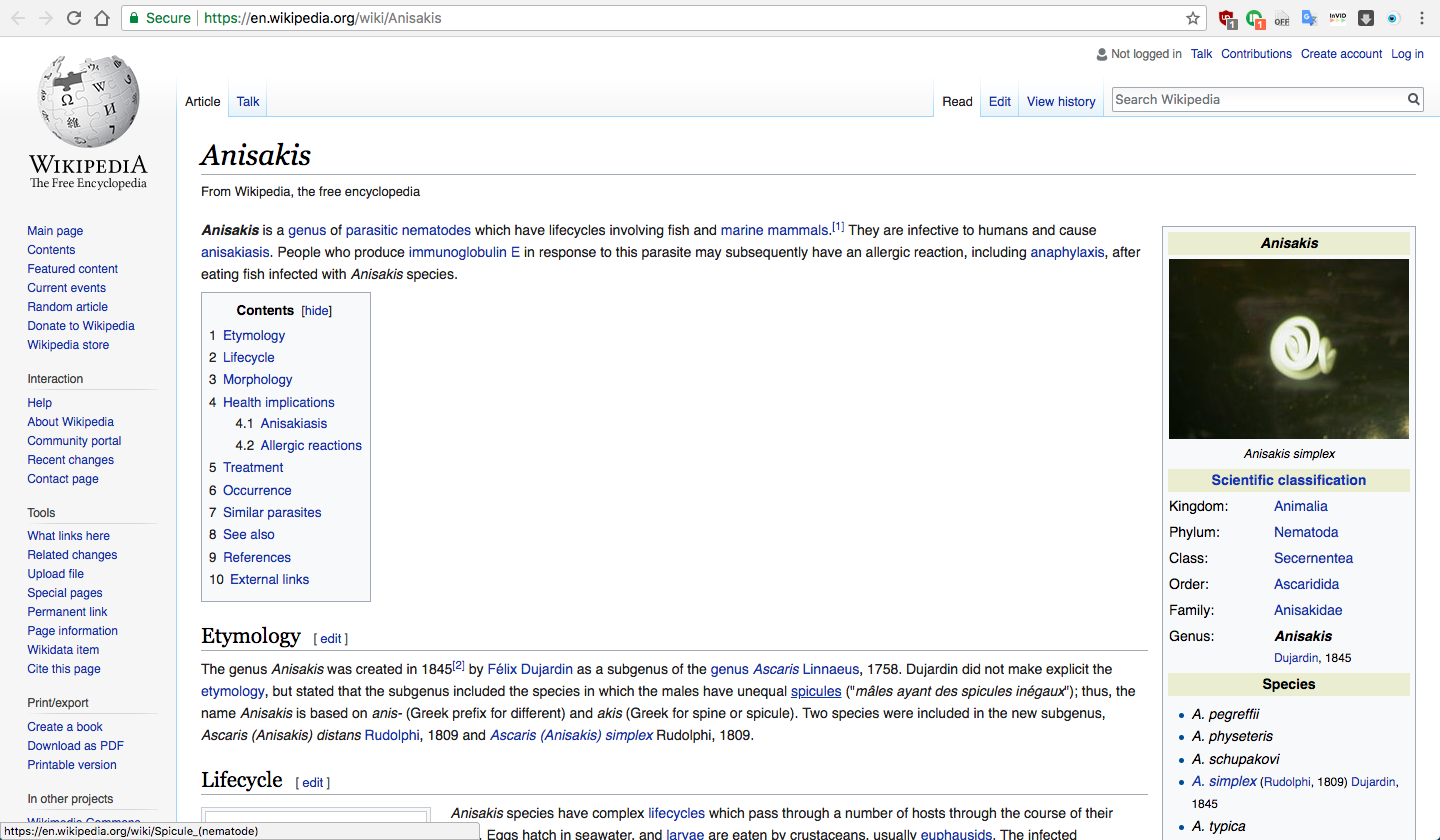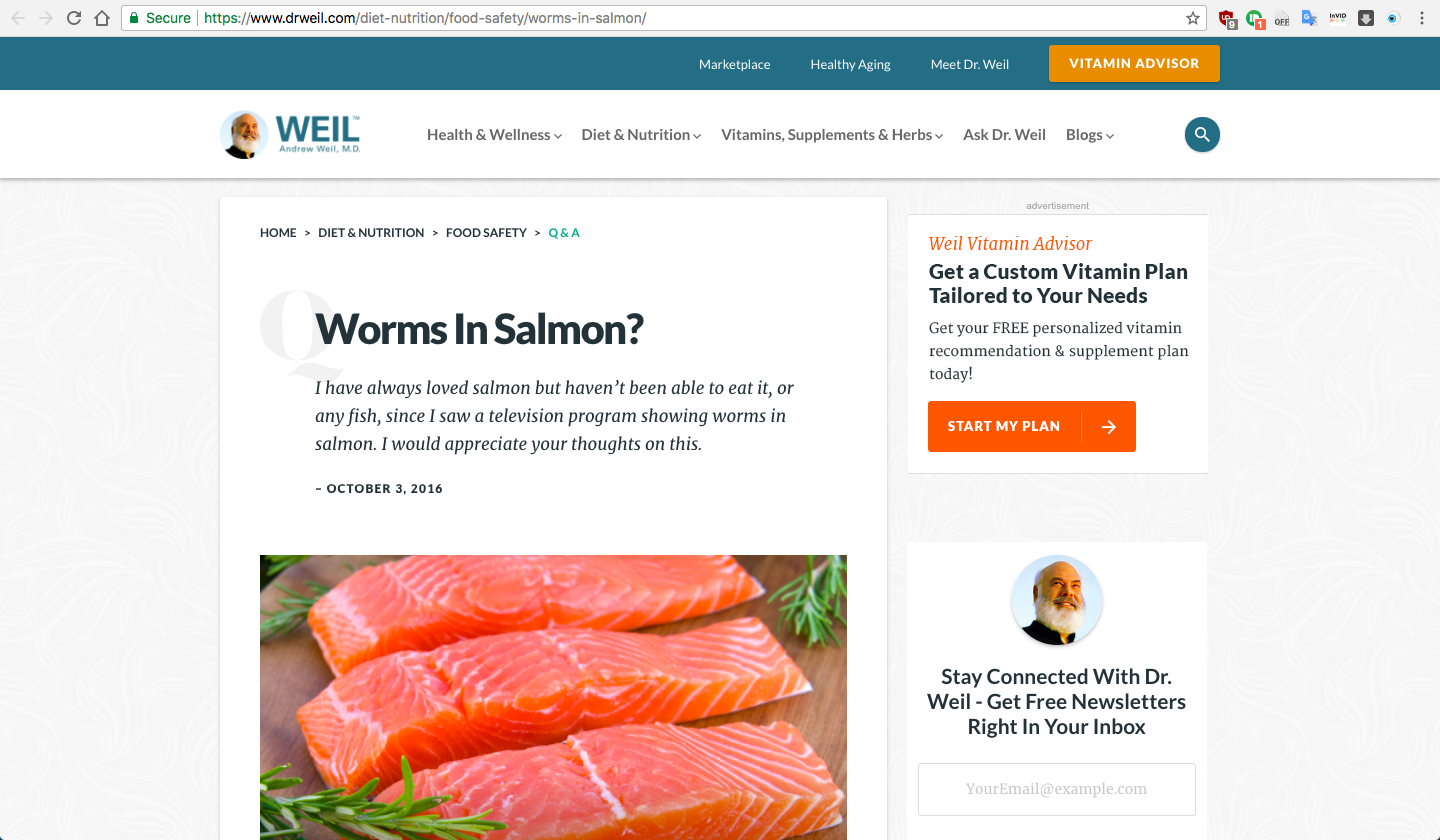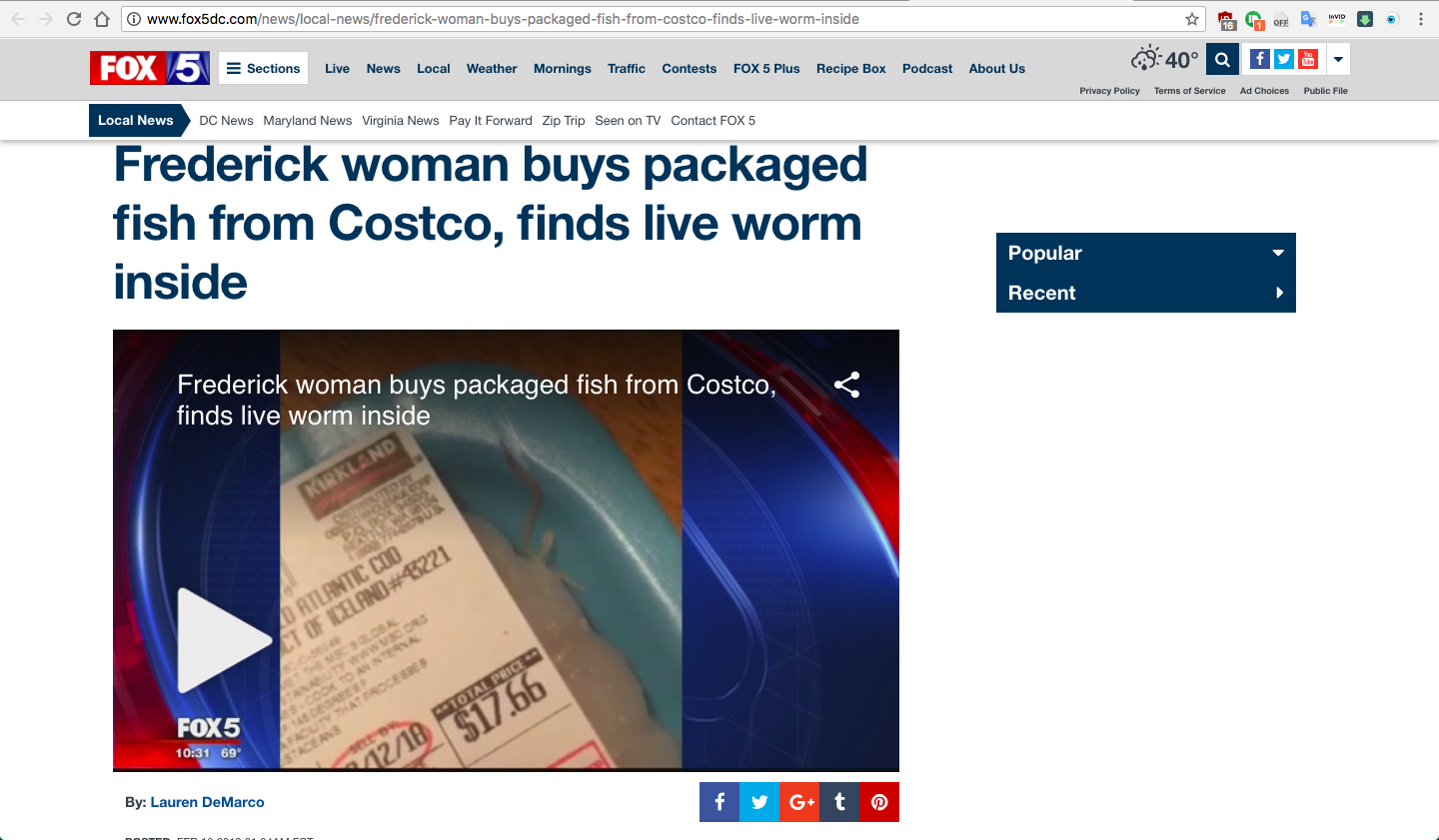“Pencegahan
Penyakit yang dipicu oleh cacing ini dapat dicegah dengan memasak pada suhu yang melebihi 60 °C atau dengan membekukannya. Food and Drug Administration (FDA) menyarankan agar semua ikan dan kerang yang dimakan mentah dibekukan pada suhu −35 °C atau lebih rendah selama 15 jam atau dibekukan pada suhu −20 °C atau lebih rendah selama tujuh hari.[2] Marinasi dan penggaraman tidak cukup untuk membunuh parasit ini. Di Uni Eropa, terdapat regulasi yang mewajibkan semua ikan yang akan dimakan mentah untuk dibekukan sebelum dijual. Regulasi ini berhasil memberantas penyakit anisakiasis di Belanda. Sebagai catatan, parasit Anisakis lebih sering ditemukan pada ikan di laut daripada ikan hasil budidaya.”
“Raising consumer and producer awareness about the existence of anisakid worms in fish is a critical and effective prevention strategy. Anisakiasis can be easily prevented by adequate cooking at temperatures greater than 60 °C or freezing. The FDA recommends all shellfish and fish intended for raw consumption be blast frozen to −35 °C or below for 15 hours or be regularly frozen to −20 °C or below for seven days.[11] Salting and marinating will not necessarily kill the parasites. Humans are thought to be more at risk of anisakiasis from eating wild fish rather than farmed fish. Many countries require all types of fish with potential risk intended for raw consumption to be previously frozen to kill parasites. The mandate to freeze herring in the Netherlands has virtually eliminated human anisakiasis.[12]”
KATEGORI | CATEGORY
Klarifikasi | Clarification.
======
SUMBER | SOURCE
(1) Pertanyaan dari salah satu anggota FAFHH | Question from one of the forum member.
(2) https://goo.gl/nBMnpe, sudah dibagikan 35.262 kali ketika tangkapan layar dibuat | already shared 35.262 when screenshot was taken.
======
NARASI | NARRATION
“Omg check this out🤤🤤🤤🤤”.
======
REFERENSI | REFERENCE
(1) “Pencegahan
Penyakit yang dipicu oleh cacing ini dapat dicegah dengan memasak pada suhu yang melebihi 60 °C atau dengan membekukannya. Food and Drug Administration (FDA) menyarankan agar semua ikan dan kerang yang dimakan mentah dibekukan pada suhu −35 °C atau lebih rendah selama 15 jam atau dibekukan pada suhu −20 °C atau lebih rendah selama tujuh hari.[2] Marinasi dan penggaraman tidak cukup untuk membunuh parasit ini. Di Uni Eropa, terdapat regulasi yang mewajibkan semua ikan yang akan dimakan mentah untuk dibekukan sebelum dijual. Regulasi ini berhasil memberantas penyakit anisakiasis di Belanda. Sebagai catatan, parasit Anisakis lebih sering ditemukan pada ikan di laut daripada ikan hasil budidaya.”, selengkapnya di https://goo.gl/u2ptN8.
(2) “Raising consumer and producer awareness about the existence of anisakid worms in fish is a critical and effective prevention strategy. Anisakiasis can be easily prevented by adequate cooking at temperatures greater than 60 °C or freezing. The FDA recommends all shellfish and fish intended for raw consumption be blast frozen to −35 °C or below for 15 hours or be regularly frozen to −20 °C or below for seven days.[11] Salting and marinating will not necessarily kill the parasites. Humans are thought to be more at risk of anisakiasis from eating wild fish rather than farmed fish. Many countries require all types of fish with potential risk intended for raw consumption to be previously frozen to kill parasites. The mandate to freeze herring in the Netherlands has virtually eliminated human anisakiasis.[12]”, go to https://goo.gl/xvVyDx for the complete article.
(3) “Now for the good news: the reason you’re unlikely to see a worm in fish is that freezing and cooking destroy them. Wild salmon (which I recommend) is frozen before it gets to retail outlets in the United States. For safety’s sake FDA guidelines call for freezing and storing all raw fish used in sushi and sashimi at a temperature of minus 20 degrees centigrade (minus 4 degrees Fahrenheit) or below for a minimum of 168 hours (7 days). Don’t worry that you’ll find a frozen worm in your salmon – they disintegrate during the freezing process. According to a 2015 FDA report, the worms aren’t likely to be found in farmed salmon as long as their feed does not contain raw fish. However, there are other problems with most farmed salmon that makes their consumption less desirable.
Andrew Weil, M.D.”, go to https://goo.gl/yYVJhz for the complete article.
(4) FOX 5: “Frederick woman buys packaged fish from Costco, finds live worm inside”, go to https://goo.gl/Mejoo9 for complete article.
======
CATATAN | NOTE
Dipublikasikan juga dalam bahasa Inggris karena SUMBER berasal dari luar Indonesia.
Also published in English because the SOURCE is from outside of Indonesia.
======
Sumber: https://web.facebook.com/groups/fafhh/permalink/607449096254296/
